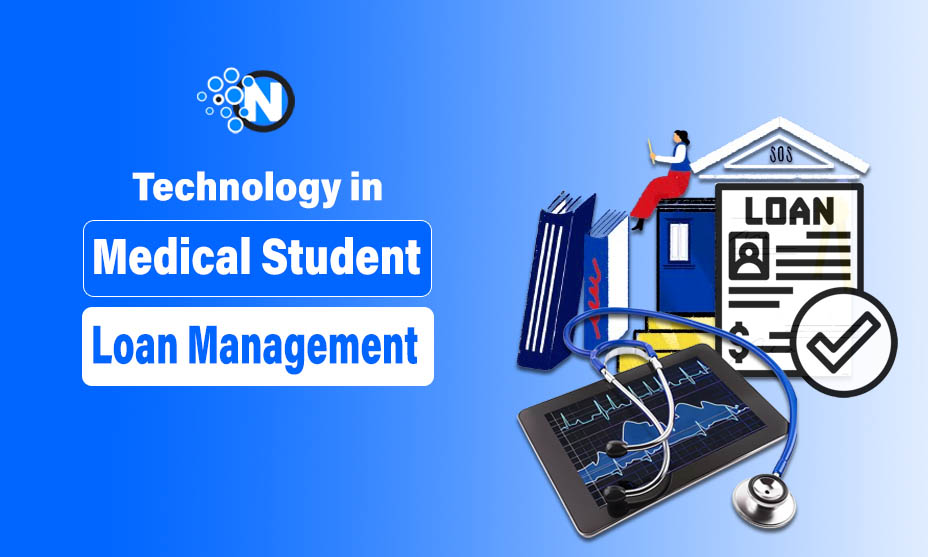How Technology is Revolutionizing Loan Management for Medical Students

Medical school is simply a remarkable investment in the future with respect to helping others. But there’s one big cost that can be hard to overlook: tuition fees. Tuition costs are very high, and students are often looking at six-figure student loan debts when they graduate.
The financial burden doesn’t just hit medical students while they’re in school, but it follows them in accommodation, fellowship, and even in the early years of their medical careers.
This, too, is an overwhelming debt to manage, but today’s technology makes it easier. Technology ranging from specific mobile applications to AI-driven tools is coming forward to help medical students take control of their financial futures.
Let’s further explore how these tools make a dent and how refinancing plays an important role in lightening the load.
Loan Management Apps: Simplifying Payments and Budgeting
One of the most effective ways technology is trying to help medical students manage their loans involves user-friendly loan management apps. These apps are making it easier for students to manage multiple loans, due dates of payment, and interest rates, which otherwise seems like a very awkward task. By offering a consolidated view of all financial commitments, they allow students to stay organized and avoid costly late fees.
Examples include Mint, and You Need a Budget. These provide interfaces that make budgeting easy and quite non-threatening. For the medical student who has both personal expenses and, now, student loan payments, these applications can keep all finances in one place. They break down spending into categories, allowing students to identify where they can cut back to allocate more toward their loans.
Others might also offer additional features, such as payment reminders or calculators that project how much longer it will take to pay off loans with the current payment scale. The tools help students avoid missed payments and stay ahead of interest accrual, which is especially critical for medical students whose loans can accumulate significant interest during residency.

AI-Powered Financial Planning Tools for Medical Students
Another fast-growing technology that has changed how medical students manage their loans is artificial intelligence or AI. AI-powered financial planning tools represent new stages of budgeting, which offer personalized insights to students based on their own unique financial position.
For instance, Albert and Trim are currently using AI to track spending habits and make recommendations for change. AI tools can first identify areas where students are possibly overspending or leaving money on the table and then present personalized solutions for unlocking extra money that could be used toward loans.
The novelty of AI is that it’s a constant learner- a process that allows the AI tool to change and adapt as the financial situation of a medical student changes, whether due to higher income during residency or shifts in living expenses. That level of personalization exceeds what a typical budget app can do, enabling students to make smarter financial decisions over the long term.
AI platforms give insight into how students can optimize their loan repayment strategies, such as identifying which loans should be prioritized according to interest rates or loan type. This is particularly helpful for medical students, who usually have an amalgamation of many different types of federal and private loans carrying different terms.
Online Loan Refinancing Platforms: Game Changers
Refinancing medical student loans is one major way for students to lower their interest rates or change their monthly payments. Those were the days when refinancing on stacks of papers was done with disheveled facial expressions by visiting an office. Online refinancing platforms have changed the game. Refinancing your student loan has never been this easy.
SoFi, Earnest, and Credible are among the companies that have created a platform where medical students can compare refinancing rates from multiple lenders in one place. Algorithms match these students with the best rates and terms based on their credit profiles, their income potential, and the size of their loans. For many medical students, refinancing means locking in a lower interest rate or extending the loan term to reduce monthly payments for better loan management.
Online refinancing platforms brought transparency to the students, putting all options on one platform. Therefore, comparisons are easy to handle and make more informed decisions from. In addition, most of those online refinancing options provide pre-qualification tools that let the student take a glimpse of the rate they will be qualified for before they formally apply. Hence, some guesswork is eliminated, so the student can spend more time focusing on their studies rather than stressing over finance.
This may be most helpful during residency for medical students when income is generally low and cash flow is tight. It’s also helpful to refinance high-interest loans to allow lower monthly payments, freeing this money for housing or medical board exams.
Automation of Loan Repayments: Avoiding Missed Payments
Automation is one of the simple but effective ways technology helps medical students handle their loans. Most servicers nowadays can offer automatic options for payment, allowing students to arrange regular payments deducted right from their bank account every month.
There are numerous benefits associated with loan payment automation. First, there is minimal risk for missing payments and being subject to late fees and damaged credit scores. Second, some lenders offer interest rate reductions-typically 0.25%–for students who sign up for automatic payments. Over time, this can save students a great deal of money, especially on high-interest loans.
For the busy medical student, automation is peace of mind. Whether they are in the middle of exams or extended shifts during residency, they can take comfort in knowing their loan payments are taken care of on schedule, sans babysitting.
Virtual Financial Counseling: Support at Your Fingertips
While apps and AI tools provide vital support, at times, medical students need advice on a personal level by an expert human. That is where virtual financial counseling comes in. Platforms like GradFin offer one-on-one, virtual financial counseling sessions to medical professionals. These services enable students to explore options for loan repayment, refinancing, and long-term financial health strategies.
Virtual financial counseling brings together the convenience of online access with the expert advice so often hardly accessible through traditional loan servicing. Advisors work with the students to assess their specific financial situation and allow them to create detailed strategies toward loan repayment that are tailored to meet their goals.
This level of support is truly invaluable to medical students who may have complicated loan situations, such as managing federal and private loans or the determination of their eligibility for loan forgiveness programs, including Public Service Loan Forgiveness.
Concluding Remarks
Technology is revolutionizing the way medical students handle loan management. From simple budgeting apps to AI-driven financial tools and online refinancing platforms, technology makes it easier than ever to manage, pay back, and even reduce student loan debt. By embracing such technologies, medical students will have a far better handle on their finances and create a brighter financial future for themselves.
Whether through automated payments, AI insights, or refinancing options, it is all about leveraging the tools at your disposal and being proactive with regard to loan management. The bottom line remains that, with technology still on the move, medical students will be assured of even more innovative ways to go through the struggle of student loan debt with greater ease.




